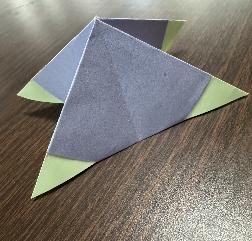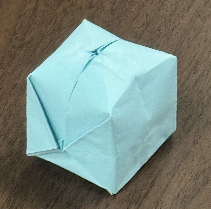Day 5 Speed Counts
July 24, 2025
Our day began with our notorious Speed Round which was held in the Social Science Building. The Speed Round consists of 60 questions that vary in difficulty from easy to challenging. Each participant must work on these 60 questions on their own and they have only 45 minutes to complete all of the questions. Each question is worth 3 points. The first few questions are relatively easy and even though the questions are not listed in their exact difficulty order, they do become progressively more difficult throughout the contest. An example of one of the easier questions would be “If x > 0 and x4 = 16, what is the value of x2?” With only 45 minutes for the entire 60 questions, the average time one has per question is 45 seconds. I’m just glad no one made me take this contest!
After our Speed Round, we returned to Decker for our first lecture of the day. Professor David Nacin of William Paterson University. Dr. Nacin’s talk explored the hidden mathematical structure behind popular logic puzzles like Sudoku and KenKen. He began his talk by introducing students to the game LUPI. Each letter in LUPI stands for a characteristic of the number needed: L = Least, U = Unique, P = Positive, and I = Integer. In this game, each group chooses a positive integer without knowing what numbers the other groups have chosen. The winning group is the group that chooses the least integer that is unique among the numbers chosen by all the groups. For example, suppose there were ten groups and the numbers chosen by the ten groups were 3, 1, 4, 7, 1, 2, 5, 6, 4, and 2. The winning group would be the group that chose 3 since it is the least number that no other group chose.
After this warm-up, Professor Nacin introduced Latin squares (arrays in which each symbol appears exactly once in every row and column) and highlighted some elementary facts about them. He then turned to cage-based puzzles that add arithmetic and logic constraints to these grids. Along the way, he uncovered the algebraic reasoning needed to solve even the simplest of puzzles, showing how fundamental concepts from more advanced areas of math arise naturally in this playful context.
After lunch, we had our second lecture of the day. Nick Rauh, one of the staff members of the Seattle University Math Museum, treated our students to a talk titled “Water Bomb Base. ” Like Paul Ellis’s lecture earlier this week, Nick began his talk by discussing about modular origami. However, Nick and Paul coordinated their talks so they complemented each other rather than duplicating each other. Our participants learned how to make a classic “water bomb,” which itself was made of a single piece of paper. Here is the picture of the "water bomb" base that combines two pieces of paper.

Nick then taught them how to make an essential building block for larger constructions. Finally, they made six identical “water bomb“ bases from which they could construct an octahedron, another one of the Platonic solids. It was not easy to weave the pieces together! Once combined, however, the structure was very stable. Here is a picture of a competed water bomb:

We concluded the afternoon with our relay rounds. While these rounds are very challenging for us to organize, they are probably the rounds our students enjoy the most. The teams are divided into 3 smaller groups, and in order for a group to get points on a relay round, each individual in the group must successfully solve a question until four consecutive questions have all been solved correctly. Faster groups get more points for the final correct answer. Watching the students pass their answers to the next person until the fourth person solves their problem and gives the final answer to the proctor is always exciting for us to view. Once again, speed counts since the faster a team successfully completes a relay round, the more points they earn. Parents and family members are invited to join us tomorrow at 7 PM in the Decker Social Space to celebrate the achievements of our students during their time with us.
This evening we had our annual movie night. No, Adam Raichel did not pause the film to tell some of his corny jokes! Instead, we were all treated to a viewing of Vice Versa. While Adam did not supply any jokes tonight, he did arrange for the refreshments we all enjoyed.
点击这里查看 Day 5 照片(部分)
